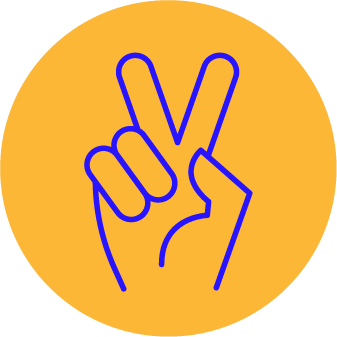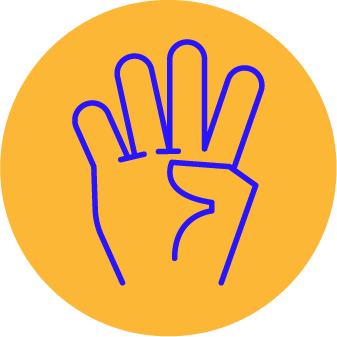
October 8, 2024, 12pm EST
Educators webinar. Send an Email to sharonh@anumuseum.org.il to receive a recording

September - March
Work on the projects, cooperation with a member of the museum team is always available.

March 31 2025
March 31 is the last day to upload the winning students projects to the program website.

April
Announcement of the competition winners
GOALS AND OUTLINE
The Koret international School for Jewish Peoplehood
The Koret International School for Jewish Peoplehood is the educational branch of ANU - Museum of the Jewish People. The school was established in November 2006 at the initiative of and with support from the Nadav Foundation. Our goal is to educate for informed and active belonging to the Jewish people. It is also our aim to be an Israeli and global home for learning communities that combines knowledge, experiences and action.
To achieve our objectives, the school works to:
· Develop educational content for organized groups that come to the Museum from Israel and across the globe
· Run continuing education programs and seminars for teachers and educational leaders, both at the Museum and off-site
· Hold activities for the general public – families and individuals - who visit the Museum of the Jewish People
· Develop educational content for implementation outside the Museum, in formal and informal educational settings in Israel and worldwide
Guidelines for competition participants:
My Family Story is an annual educational program intended for students aged 9 to 14 who are part of a Jewish education framework- Jewish school, supplementary Hebrew school, Jewish youth movement, etc. The program invites the students to explore their family story, convey it in a work of art, and turn their roots project into museum objects. By doing so, it enables the students to research and discover the Jewish element of their identity, get to know family members who live in Israel and around the world, learn stories that are passed down in the family from generation to generation, connect with their roots, and broaden the circles of belonging to their family and to the Jewish people.
The program consists of five components: registration, educational activities, local exhibitions of the projects, an international competition to choose the winning entries, and a concluding international gathering at ANU - Museum of the Jewish People.
1. Registration
Schools that wish to take part in the competition should register on the My Family Story website, which can be accessed through the Museum's website. (The relevant page can be found in the space intended for educators). When signing up for the competition, you will be asked to provide details about the participating institution, and also about the number of students and the contact person who will be running the program at the school. Payment of a registration of $150 is also required.
In addition to the above, we also recommend registering for educator trainings that are designed for the teachers who will be spearheading the program in their respective classrooms. The trainings will be delivered by staff from the International School for Jewish Peoplehood.
After the online form is completed, a staff person from the Museum will get in touch with the contact person at each school.
2. Educational activities
The competition participants will be required to attend classes designed especially for the program, in the course of which they will be introduced to basic concepts related to Jewish peoplehood. They will also learn how to gather information, create a family tree, conduct interviews with family members, and prepare a research project and roots album dealing with the history of their family. Additionally, the participants will engage with food, artifacts and photographs as tools for telling a personal, family and community story, while examining their own attitude toward all of them. This educational process will lead the participants to create a work that is an artistic expression of the research they conducted.
3. Local exhibitions of the projects
At the local level, the peak event of the program will be an exhibition of the students' projects, held at each participating school. The works of art and roots albums prepared by the students as part of their research will be on display. Of all the exhibited projects, the two best entries will represent the school at the international competition – chosen either by a panel of judges or by taking a vote. Those two works will be submitted to the international competition via the program's website.
We recommend that members of the local community be invited to the exhibition opening at the school. The participating students should be instructed to explain the works they created to the people in attendance. In such a case, representatives from the community (or, as noted above, a panel of judges appointed by the school) could also be allowed to choose the two projects that will represent the school and be submitted to the international competition.
At the time of submission, an explanation about each work of art should be included, as well as a short video in which the student provides an artist statement.
4. International competition
The projects submitted to the international competition via the program's website (no more than two entries per school) will be reviewed by panels of judges selected by the Museum. The judges who serve on the panels come from diverse disciplines and include educators and programming professionals from the field of Jewish peoplehood, curators from the Museum's curation team, and representatives from Israeli and international Jewish organizations, universities, and museums.
The projects will be judged based on the following criteria:
Jewish peoplehood – the story chosen by the student should illustrate and deal with at least one of the pillars underlying the notion of Jewish peoplehood: collective memory, Jewish values, a multifaceted connection with Israel, the Hebrew language and Jewish languages, Jewish culture and creativity, and Jewish spirituality or religious practice. .
The research process – the quality and depth of the information gathering process and the research conducted by the student about his/her family history. This includes creating a family tree, creating a family crest, gathering information, conducting interviews, and creating a work of art or roots album.
Aesthetic presentation – like any other museum object, the work of art has to excel from an aesthetic perspective and spark interest and curiosity in the Museum's visitors.
Creativity – the work should portray the personal, family or community story of the student who created it in an original and meaningful manner. For that purpose, use should be made of artistic techniques and diverse motifs that will arouse curiosity and encourage an examination of the exhibited story.
Artist statement – a personal note that will complete the picture and help people understand the work and the inner world of the student who created it.
5. Concluding international gathering at ANU – Museum of the Jewish People
The students whose entries win the international competition will be invited to a special gathering held at ANU - Museum of the Jewish People, attended by all the winners from across the globe. They will also tour the country together and take part in a day of stimulating activities at the Museum, whose highlight will be a ceremony at which the certificates of participation will be awarded to the winners.
Registration for the program
The program "My Family Story" is an annual international competition of heritage projects, suitable for children aged 9 – 14 years. The winning projects of the international competition are on display at ANU - Museum of the Jewish People. The winners come to Israel to participate in an international gathering and join a special trip shared by winners from Israel and abroad.
*Required fields
Countries that participate in the program



